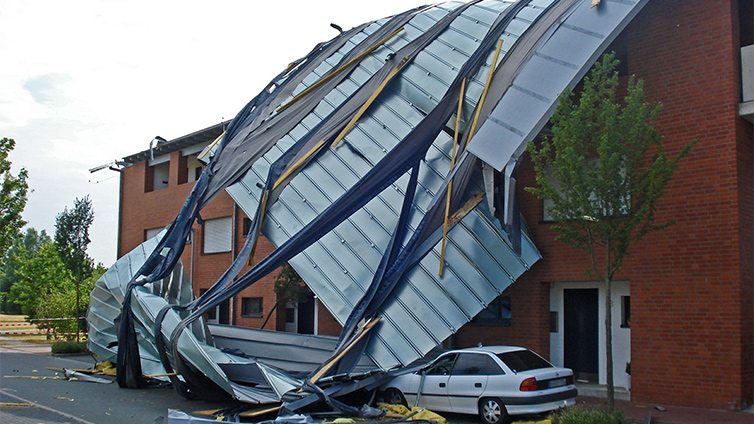Do You Need Roof Repairs? Consult Our Post-Storm Checklist First
Like most other regions of the United States, Central Texas experiences its share of weather events and natural disasters. From severe hailstorms, tornadoes, and tropical storm remnants to the frequent summer thunderstorms that commonly pop up in the afternoons, wind, hail, and rain are common occurrences in the area. Unfortunately, these storms can cause significant damage to your home’s exterior. So, what do you do if a storm passes through your area? Consult our Storm Damage Guide (and view our Storm Damage Checklist) to find out.
Your Storm Damage Guide
First, remember to stay inside until the storm has passed. While you wait, browse this guide to the different types of storm damage and learn what steps you should take after the storm ends. Then, assess which types of weather events were contained within the storm, so you know what sort of damage to look for.
Local storms often contain the following types of weather events:
Post-Storm Task #1—Your Inspection Checklist
After the storm ends, head outside and visually inspect your roof from the ground using this checklist. Please note—on-roof inspections are risky and should be conducted by a professional; if you see damage that requires closer examination, schedule an appointment with your roofing contractor.
Walk the perimeter of your home, paying close attention to the following areas:
Post-Storm Task #2—Speak With a Professional Roofing Contractor
If you can observe storm damage after performing the above checklist, it’s important to schedule further inspection and repairs as soon as possible to prevent further damage. After a significant storm in the area, traveling roofing companies often go door-to-door, offering their services. For the most part, if their deals appear too good to be true, they likely are. Instead, rely on a trusted roofing contractor. Find an certified contractor with plenty of experience inspecting, repairing, and installing roofs. This way, you’ll not only receive a certified inspection from a professional, but you’ll also get an honest assessment/estimate of your repair/replacement options and quality work to back it up.
Post-Storm Task #3—Contact Your Insurance Provider
If repairs are necessary, it’s important to contact your homeowner’s insurance provider as soon as possible. You’ll need to file a claim accurately and quickly to ensure proper coverage of the repairs based on your insurance policy. In most cases, your insurance provider can work directly with your chosen roofing contractor to determine your home’s needs after a storm. Your homeowner’s insurance will likely send an adjuster to your home to determine the extent of the damage caused by the storm. In some cases, however, your notes and a professional roofing inspection can also be used to determine your needs.
Do You Have Storm Damage? Contact Red Owl Roofing
After the storm, finding a local, Austin trusted roofing contractor is critical. You’ll need to schedule an inspection and repairs quickly to prevent further damage to your roofing system and avoid the excess water infiltration that can damage your property and put your family at risk. Fortunately, for residents in Central Texas, there’s a clear choice for quality roofing work. Red Owl Roofing is a certified contractor with over 35 years in the business and a full team of licensed, certified roofing professionals. Whether repair or replacement is in your future, our quality workmanship speaks for itself—inquire about our 50-year lifetime warranty for your new roof. For more information or to schedule a post-storm inspection, contact Red Owl Roofing today.
